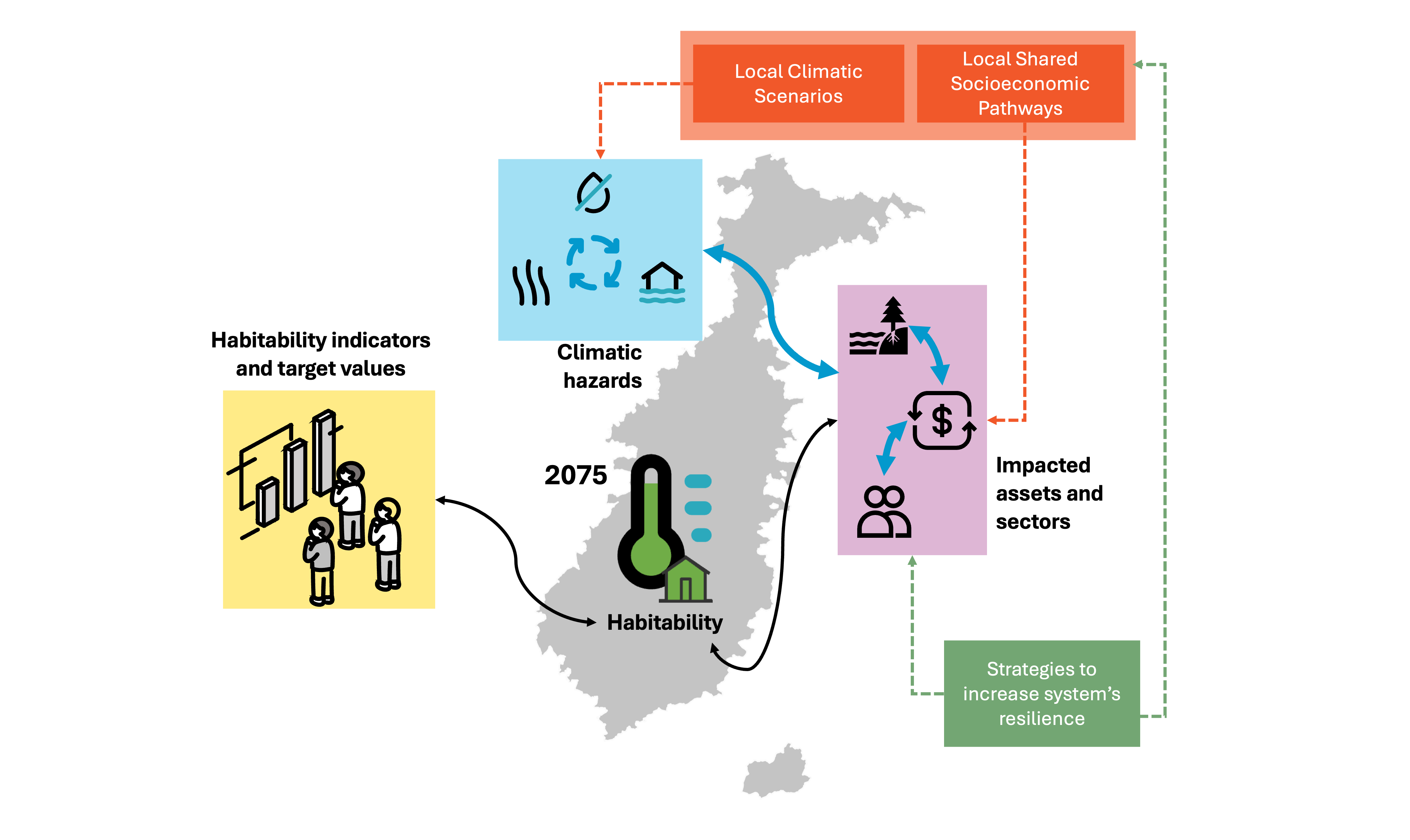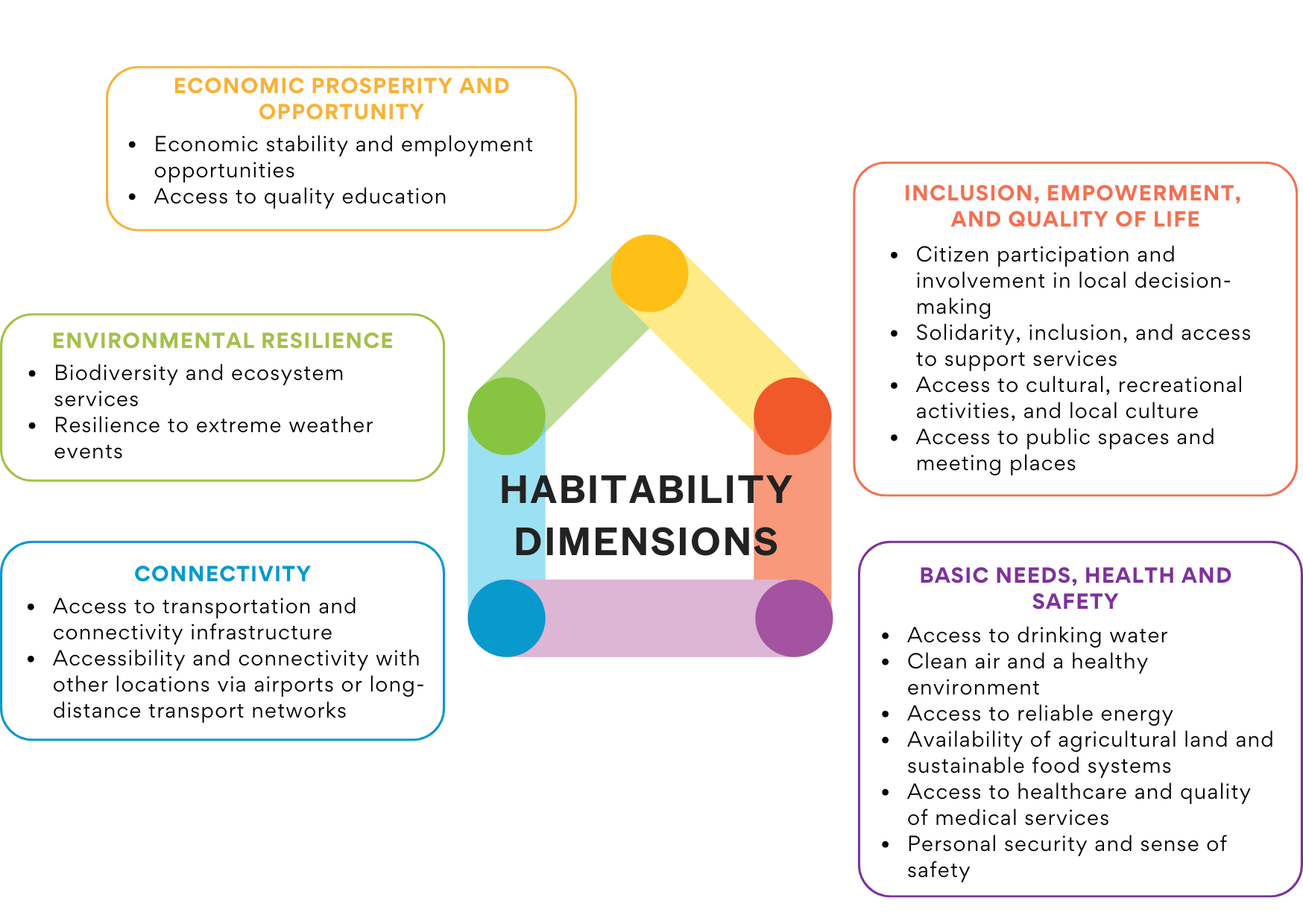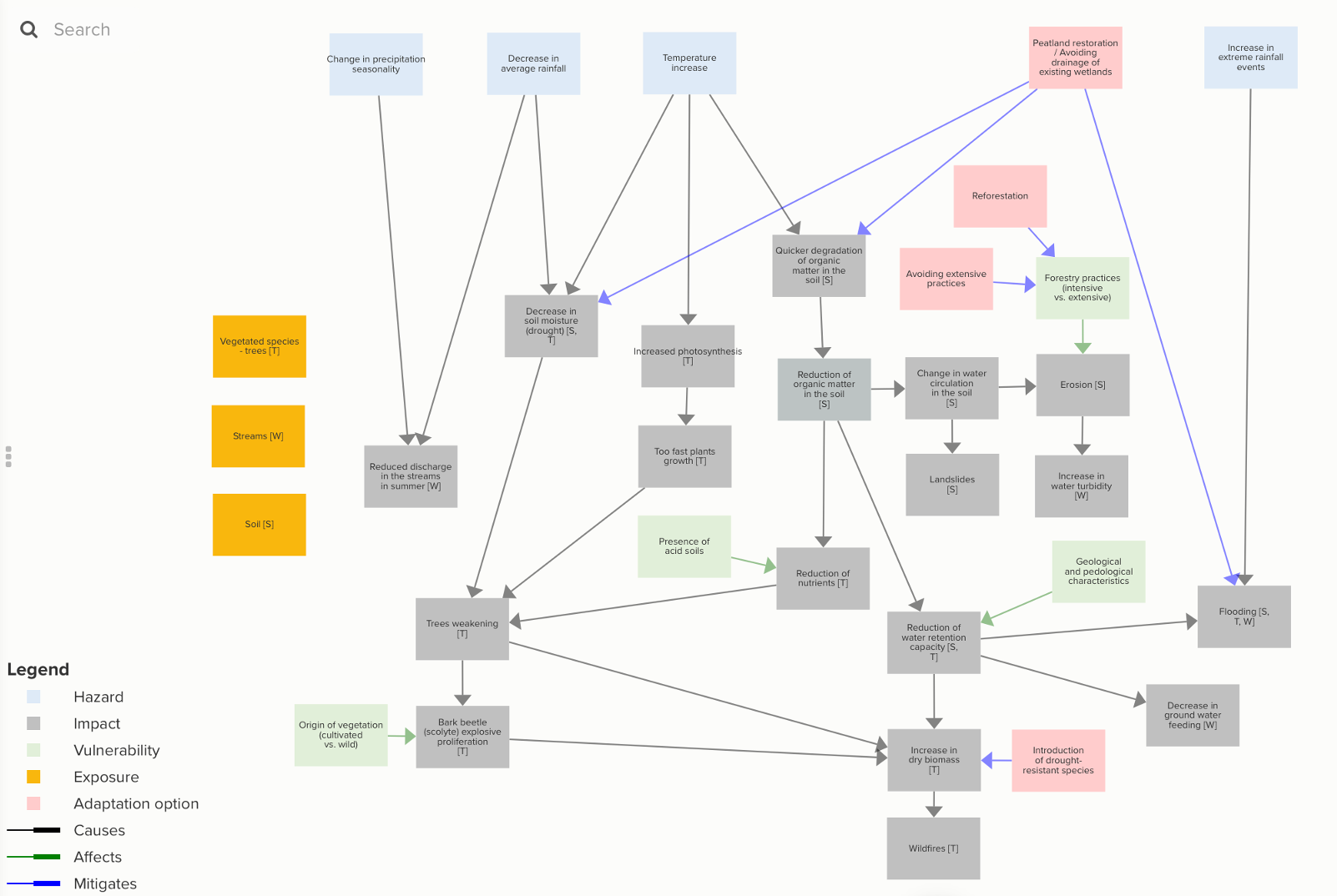
French version


Co-defining the habitability of Lorraine under climate change and future multi-risk conditions
Start date: October 1, 2024 | Expected duration: 24 months | Funded by: Lorraine Université d’Excellence as part of the project "EPHemeris - Earth and Planet Habitability” | Scientific lead: Dr. Silvia De Angeli, with support from the LIEC and LOTERR laboratories at Université de Lorraine
The context
Habitability refers to the suitability of an environment to support human life by providing sustainable living conditions. Traditionally, this concept encompasses material factors such as housing, food, and access to water. However, a comprehensive understanding of habitability also includes local knowledge and the social, economic, and cultural realities of communities.
In the context of climate change, habitability is closely linked to climatic risks—such as droughts and floods—that affect populations' ability to live in a given area. Resilience to these risks becomes crucial to ensuring sustainable habitability.
The aim of the project
The Habi(Li)ter project aims to understand how climate change and the resulting interacting risks will impact the future habitability of Lorraine for its human populations, This will be accomplished through bottom-up transdisciplinary approaches that incorporate values, knowledge, expertise, and insights from both academic and non-academic sources.
Focusing on the Vosges Massif, where climate change is altering living conditions and impacting ecosystems, the project seeks to develop a conceptual framework for analyzing climate risk dynamics and their impact on the habitability for local communities.
Through the integration of data-driven models and stakeholder insights, the project will develop an advanced conceptual framework to elucidate the complex interplay between climate drivers, socio-economic factors, and multi-hazard risks in the region with a focus on their implications for the habitability of human populations and the functioning of ecosystems. The project is inherently interdisciplinary, integrating perspectives from disaster risk management, ecology, geography, and social sciences, among others.
Habi(Li)ter in a nutshell

WHAT
- Co-define habitability of places for human populations by developing a set of indicators and ways to measure them
- Develop an advanced conceptual framework to elucidate the complex interplay between climate drivers, socio-economic factors, and multi-hazard risks in the region and how they might affect habitability in present and future
HOW
- Bottom-up, transdisciplinary approaches to knowledge co-production
- Use of Risk Storylines and Impact Chains
WHERE
- Vosges Massif area, examining the interacting impacts climatic hazards (e.g. droughts, floods, heatwaves...)
WHY
- Enhancing the habitability of human populations and the functioning of ecosystems in Lorraine
- Empowering local communities to navigate climate risks and foster sustainable development, contributing to the ecological transition agenda
Co-defining habitability
The Habi(Li)ter project will co-define the concept of habitability from a local perspective and identify a series of indicators to describe and measure it. Habitability will be explored, considering its multifaceted nature, which encompasses factors such as environmental quality, infrastructure resilience, social cohesion, and economic stability. Furthermore, special focus will be given to establishing connections between habitability indicators and ecosystem services and functions.
This approach aims to enhance the assessment of how changes in ecosystem services provision impact the well-being of social systems under current and future conditions.

Development of a Conceptual Framework
During the project, we will develop a comprehensive conceptual framework to analyze present and future habitability, emphasizing the interactions between climate drivers (e.g., shifts in snow and rainfall patterns, temperature variations) and environmental and socio-economic vulnerabilities (e.g., demographic changes, tourism pressure, reliance on climate-sensitive industries). These factors will be examined in relation to their impacts on key sectors such as tourism, energy, and forestry.
Risk Storylines
A Climate Risk Storyline is a narrative that outlines how climate change impacts could unfold over time, considering various climate risks (e.g., extreme weather, temperature shifts) and their interactions with socio-economic and environmental factors. It helps visualize potential future scenarios to inform decision-making and adaptation strategies.
The Habi(Li)ter project aims to adopt the Risk Storylines as an exploratory tool to investigate present and future habitability under climate change and multi-risk interactions and define suitable modelling strategies to assess it in a quali-quantitative way.
The key elements of the Habi(Li)ter Risk Storylines are designed to provide a comprehensive framework for understanding climate risks and their potential impacts on habitability. These elements include:
-
Geographical and Social Context. Defines the region’s context, including timeframe, location, climatic profile, population, land use, and dominant economic activities.
-
Reference Hazards and Interrelationships. Identifies primary climate hazards and explores how they may interact and amplify each other, creating cascading risks.
-
Key Exposed Systems. Highlights vulnerable systems such as human settlements, agricultural lands, infrastructure, and ecosystems.
-
Key Vulnerabilities. Examines physical, socioeconomic, and environmental vulnerabilities of exposed systems.
-
Long- and Short-Term Habitability Risks. Assesses the potential impacts of climate hazards on basic needs, health, safety, environmental resilience, and other key habitability dimensions, distinguishing between short-term and long-term consequences.
-
Resilience and Adaptation Options. Proposes strategies to enhance the region’s resilience and capacity to adapt to climate impacts, ensuring long-term habitability.
-> Click here to read an example of a Risk Storyline developed to assess the impacts of drought and heatwaves on the habitability of the Vosges Massif in 2050.
-> To know more about the development of Risk Storylines in Habi(Li)ter, have a look here: ⟨hal-04836017⟩
Silvia De Angeli, Stefano Terzi, Gilles Drogue, Simon Devin. Risk storylines to investigate people’s habitability in the Vosges Massif (France) within the context of multiple climatic risks. INQUIMUS 2024, Dec 2024, Bolzano, Italy. hal-04836017.
Impact Chains
A key aspect of our approach will be the implementation of Impact Chains (Zebisch eta l., 2022), a conceptual models based on cause-effect chains, to map causal pathways among climate risk components. Factors and processes are assigned to the risk components hazard, vulnerability or exposure. Cascading effects are considered as intermediate impacts.
The construction of Impact Chains in Habi(Li)ter will be informed by diverse data sources, including expert interviews, participatory workshops with non-academic stakeholders, literature reviews, media analysis, and statistical and spatial data assessments.
Reference: Zebisch, M., Terzi, S., Pittore, M., Renner, K., & Schneiderbauer, S. (2022). Climate impact chains—a conceptual modelling approach for climate risk assessment in the context of adaptation planning. In Climate adaptation modelling (pp. 217-224). Cham: Springer International Publishing.

-> Consult the interactive Impact Chains illustrating the key impacts of climate change on:
- the forest ecosystem: https://kumu.io/habi-li-ter/impact-chain-vosges#cc-impact-on-the-forest…
- the water resources: https://kumu.io/habi-li-ter/impact-chain-vosges#cc-impact-on-water-reso…
- the socio-ecological system of the Massif: https://kumu.io/habi-li-ter/impact-chain-vosges#cc-impact-on-the-socio-…
-> To know more about the development of Impact Chains in Habi(Li)ter, have a look here: ⟨hal-05062105⟩
Silvia De Angeli, Stefano Terzi, Marc Zebish, Gilles Drogue, Simon Devin. Co-designing Impact Chains to assess people’s habitability in the Vosges Massif (France) and adapt to multiple climatic risks. EGU General Assembly 2025, Apr 2025, Vienna & Online, Austria.
Newsroom:
-
LE PROJET HABI(LI)TER PRÉSENTÉ À L’EGU25 (in French)
-
HABI(LI)TER : DÉFINIR L’HABITABILITÉ FACE AU CHANGEMENT CLIMATIQUE DANS LE MASSIF DES VOSGES (in French)

